Teaching students with disabilities seems to be becoming pretty common. However, language teachers, who may have no training in handling children with learning difficulties, often find them in their classrooms. While I have no perfect solutions, I do have some tips that may help.
Most important tip
Firstly, please do not discourage students with disabilities or any learner for that matter. For example, it’s best to avoid giving them test results they can compare with others. In addition, you would never want to read out or make test results public, inadvertently highlighting the students with disabilities’ failure.
A rule of thumb for any teacher is never to imply that a student cannot succeed. Students with disabilities often know they are drowning and don’t need it pointing out! On the contrary, if you are positive, then perhaps your students will also be hopeful and have more confidence, despite their learning difficulties. Even if you teach the student nothing in your particular class, you will at least have given them emotional and moral support. Consequently, this student may have the courage to continue trying.
Set attainable goals

Regardless of what you are doing with the rest of the class, set individual goals for students with disabilities, such as learning two new words in a lesson. If your learners are children, keep parents in the loop by sharing these goals. Also, try to make them attainable. Hopefully, students will succeed with their specific goals, and this is encouraging.
If you use the same text with the whole class, give easier questions to challenged learners. Naturally, you cannot expect students with difficulty to complete the same tasks as the other students in the same timeframe. How would you like to be lost in class and unable to do the assignment when everyone around you can do it?
However, with encouragement and hope, your students with difficulties may nevertheless go on to succeed in an area of life, despite travelling a relatively short distance along the academic path. After all, those people who are happy are the successful ones!
My experience
The first time I had a student with learning difficulties, I didn’t know it. The parents dropped her off and said nothing. However, I soon observed that she couldn’t retain information. So I just went on as if nothing had happened and pretended that I hadn’t noticed. Then, I started asking her questions right after we had just heard the answer, and she could answer me correctly. Any correct response from my pupil meant that I could praise her, which I did lavishly, and I believe this was fairly rare for her!
I was astonished, therefore, when her parents told me she had improved in all subjects at school since coming to my classes. I think I was the only teacher who was able to say “Well done” and “Yes! That’s right!” That said, I appreciate that it might not be as simple as that. But honestly, giving tasks students can do and encouraging them will go a long way. On the contrary, leaving them lost will only make them feel hopeless, and potentially give up, get depressed, and have all sorts of additional problems.
Discover the hidden talents
If there is something that the child is good at, include that in the lesson. Being good at something does wonders for a student’s self-esteem. At last! Something they are good at! For example, I knew a Downes Syndrome boy who was a brilliant dancer. So, he could do a funky dance as a forfeit in a game, while someone else might prefer to name three vocabulary flashcards.
Appeal to different learning styles
Make sure you include lots of movement and other stimuli (not just a pen, paper, and books). Activities like a mystery box, flowing scarf games, feeling, smelling, charades, word games, acting, dance, and songs appeal to different learning styles and talents.
See 176 English Language Games for Children for fun, varied ideas.
If you can work out how a particular student with disabilities learns best, that will help. In addition, parents or the school might be able to give you more information about their child. For example, the child may respond best to visual stimuli rather than kinaesthetic – knowing this can help you a lot. This blog contains more on learning styles.
Find out more from the experts
You may want to delve deeper and read about learning difficulties. You will find a plethora of books on ADHD, dyslexia, autism, etc., and it could be inspiring bedtime reading! No kidding, if you understand what someone is going through, you may be more compassionate, which will help you a lot when you are standing there feeling frustrated in class. You’ll also learn tips on how to handle those difficulties.
It’s also well worth asking for support from your school and other teachers. If you can observe or talk to experienced teachers who have relevant knowledge, this can be a huge help to you. This book by Tom Daly, How to Turn Any Disruptive Child Into Your Best Student – the ADHD Solution for Teachers, is out there, lost among millions of books on Amazon. I do not know if it is any good, but at $2.49 a copy, you can’t go wrong! Here is the link.
English Teaching Resources
I do know of teachers who are already using my games and resources for children with learning difficulties. And they have had success with them. I believe this is because children with learning difficulties often need to go at a slower pace, have lots of repetition, and be stimulated with visuals, audio, kinaesthetic methods – not just textbooks and worksheets, which, often for various reasons, they can’t handle.
So I would say that if you use my games book for primary school children and teach three to four new words at a time, with lots of different games and repetition, you should get somewhere. And I’d also use the plays and skits with them. If you are not teaching English as a second language, but English as a native language, then the games book will be great to drill spelling and grammar with them gently.
Great resources for teaching children with learning difficulties
-
Games
ESL Games book for primary & middle school children
Rated 5.00 out of 5€19.97€15.33 Add to cart
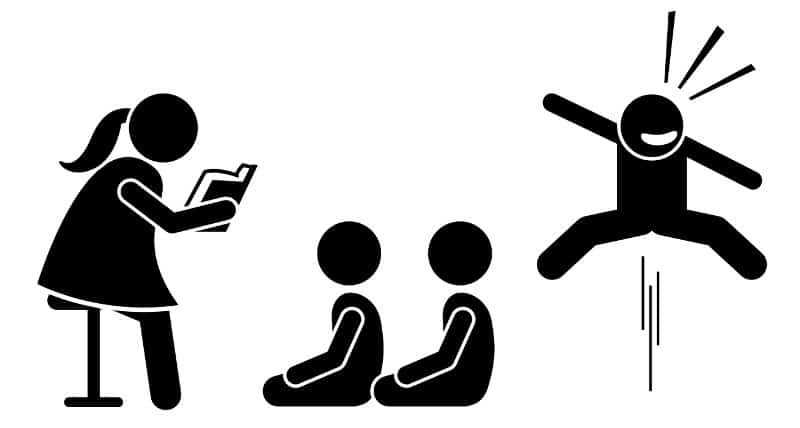
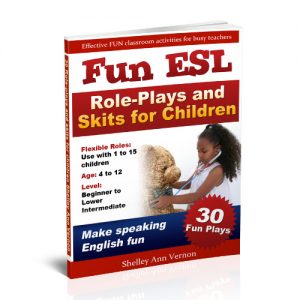
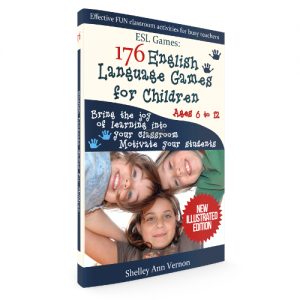
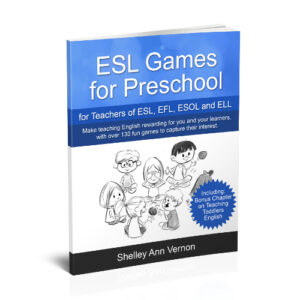
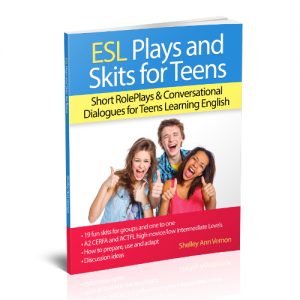
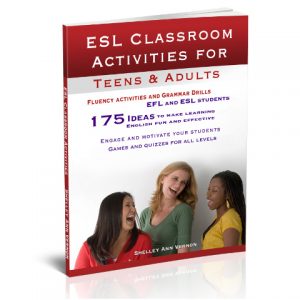
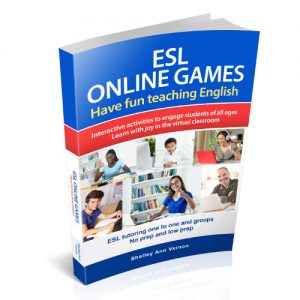
9 thoughts on “Students with disabilities”
I teach teenagers in 50 students groups, it is really difficult to detect and help students with learning problems. Furthermore, parents do not help. Thank you for your article it was really helpful.
Thank you for your information. I found it really helpful. I work with children from 6 years old to 19 years old in a residential therapeutic school for kids and teens with psychological, emotional, social and psychiatric challenges. Many of the students find it very difficult to retain new English vocabulary, as you say. Many work well with visual prompts so I use this a lot in class. For example, I introduce the vocabulary then use the same vocabulary for bingo (where the pupils link the images to the words or vice versa), charades, ‘What’s this?’ games and anything else I can make up to repeat and reinforce the vocabulary. This school year I noticed that many of the students that had made good progress last year had forgotten even the simplest of vocabulary following their summer break. The students return home for the holidays and it can feel a bit like starting from scratch when we all return in September. So I decided to set up ‘The English Corner’ in each class, negotiating a wall space in each classroom with the teachers and using the English lessons for all the students to be involved in making colourful and creative posters of vocabulary basics and pinning them to the wall. I wanted them to be able to have daily reminders of the work they had been doing and what they had learnt. I also wanted them to own this space as their own. I will have to wait until September to see if this idea has helped in any way. I also praise the students when they achieve something, however small, in class. With the added challenges that these students are having to manage in their lives, and progress is huge. Like you say, I never judge or use a critical authoritative approach to teaching my students. It is so important to try to find the one thing that each child is interested in and build on that when possible. Water the good seeds only, as they say. I have worked in this area for over 5 years now and I’m always adapting, adjusting, modifying and learning how to reach and how to teach these wonderful kids whose courage and resilience blows me away. I read a quote recently which stuck in my head, ‘To teach is to learn twice’. I really like this but I would change it a little to say that to teach is to learn and to never stop learning.
Dear Denise,
Thanks for your helpful contribution to this page. The English corner is a good idea. Perhaps other teachers can include a few things related to their topics, but in English – a picture of a volcano for the geography teacher, and a famous Queen for history. You might get them on board more easily then.——————————————–
It is normal for kids to seem to have forgotten everything in September. But for most kids, all those words and phrases are archived in their brains. They just need time to send a little man with spectacles down to the archives, to go through the grey drawers, and return a little later with the information. At least that’s how I imagine my memory to work!———————————————-If you use listening games first – where you say the words and phrases and kids respond, by pointing to the right picture, or miming the word, you’ll have more success than if you expect them to produce the word in English on the spot. Once prompted like this, the words will come back for many.——————————————————–Perhaps those with severe difficulties will have to re-learn from scratch. If so, that’s how it is for those students and teachers have to accept it, and not feel defeated or that they have failed. Perhaps one day the information will stick. After all, if those children learned their native language, they do have what it takes to learn a second language.——————————————-
Keep up the good work! Your students are lucky to have a dedicated teacher like you. All the best, Shelley Ann Vernon. (Teaching English Games)
Thank you for your reply, Shelley. I really like your suggestions of visual exercises to start the term off. I will try this. And I love the image of the working memory! If this image sticks in my mind then it shows how good images and visual exercises work. Thank you!
Thank you ,Shelley! Your article was very useful for me!
Dear Natalie, My pleasure ! I hope to send you more useful ideas soon. All the best, Shelley
Hello there Natalie, Thanks for your message.
On this page you will find all my blogs with games that you may use for grammar – any grammar!
https://teachingenglishgames.com/category/grammar-games/
All the best
Shelley
Thank you Shelley for this article. I work in a private language school and I have been teaching a dyslexic boy for the last 2 years and have used many of your games which he has loved and enjoyed. But, what I find most challenging is when he brings his English book from school and tells me he has to learn a certain amount of words or grammar in an hour ( he comes 1 hour a week),because I haven’t been able to prepare anything in advance.
Dear Rosana,
Thanks for your comment. So when he comes with a list of things to learn, choose an amount that you know he can handle in the time you have. There is no point trying to teach all of it if that is too much for him and you know it. Then between you sketch any flashcards that you need for the vocabulary or grammar and play games with that. At least you can teach him six new words encased in one of the grammar points. All the best, Shelley